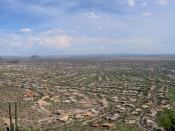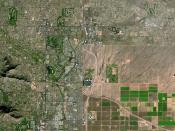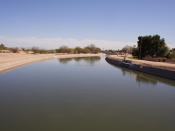A Manmade Oasis
Scottsdale Arizona is a young city with a long history. Today it is a thriving metropolis that was voted the "Most Livable City" in 1993. In the middle of the desert, nothing is possible without a stable water supply. People have lived in what is now Scottsdale since 300 B.C. 2000 years ago and to this very day, water has been the key factor in shaping the economic development of Scottsdale.
Without an external source of water in Scottsdale, there could be no civilization. As early as 300 B.C. the Hohokam people inhabited what is now Scottsdale. The only source of water to supplement the insufficient rains was the Salt River. The Salt River would rage in the spring when they needed it least and would disappear in the summer months when water was in highest demand. The Hohokam people dug canals by hand that diverted water from the Salt River to their fields.
Without modern tools or air-conditioning, the Hohokam people built over 200 miles of canal in Arizona, much of which is still used to this day. These canals allowed them to begin subsistence farming and create communities. In the mid-1300s there was huge flooding which destroyed the Hohokam's brush dams and many of the canals. This flood was followed by decades of drought that forced the Hohokam to migrate.
Scottsdale was unpopulated until the 1820s when mountain men came to trap the Sonoran beaver for the beaver hat rage and returned with "the rugged mystique about Arizona that endures."(Fudala 24) During the California Gold Rush of 1848, some never made it and some decided to move back to Arizona after the craze ended. The federal Homestead and Desert Land acts as well as the arrival of the railroad to Arizona all led to a...


